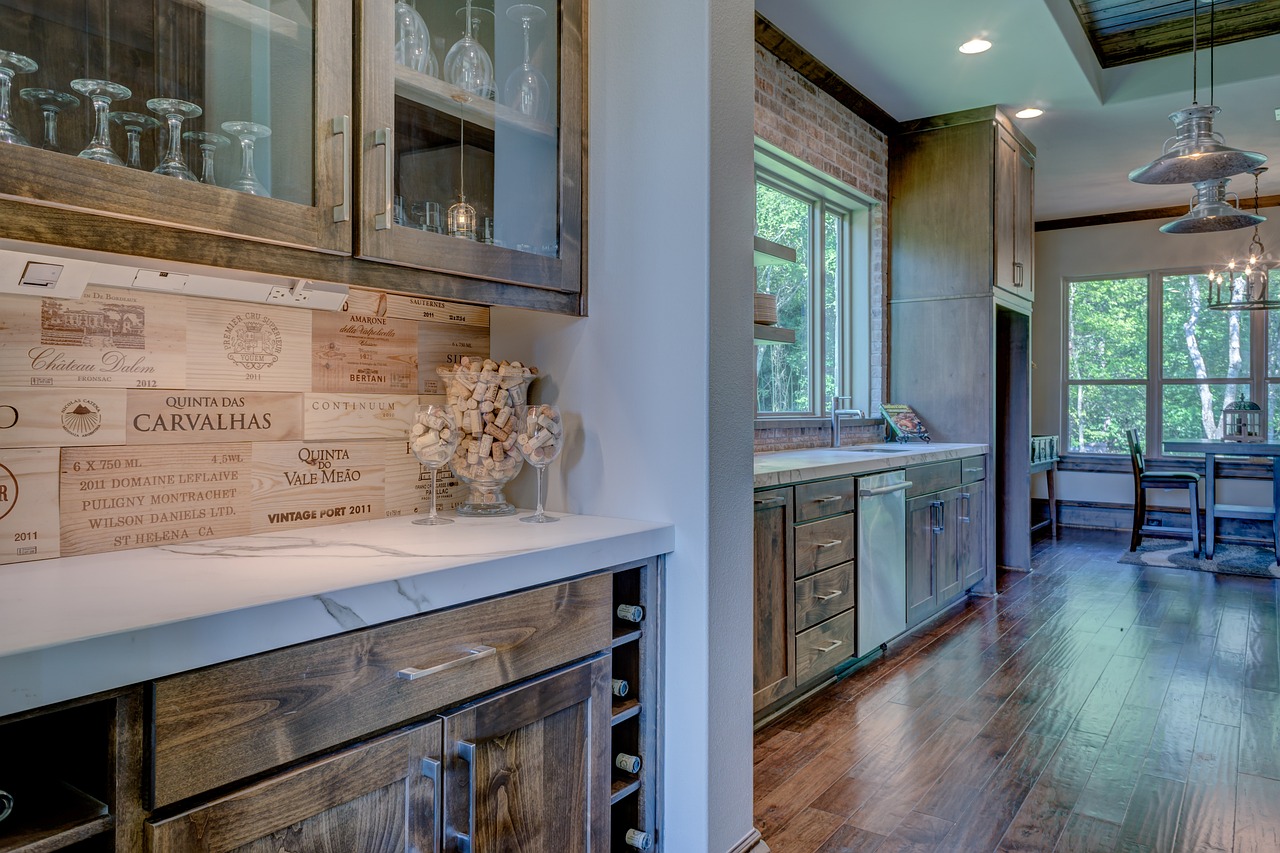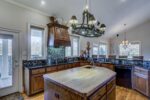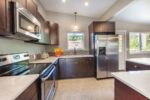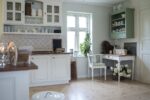If you ask any real estate agent about the most crucial room in a house that can make or break a deal, they will invariably mention the kitchen.
A poorly planned or outdated kitchen cannot be disregarded, despite the possibility of homebuyers disregarding a small bedroom or dimly lit bathroom.
No matter what kind of kitchen or interior design is chosen, insufficient storage or poorly made cabinetry cannot be remedied. Custom cabinets that are visually appealing also enhance the worth and efficiency of both the kitchen and the house.
Cabinets have a significant impact on the aesthetic of houses, especially in kitchens and bathrooms where they take center stage. Even in other rooms, they can be essential in enhancing the appearance and functionality of the space. When redoing a bathroom, creating a new kitchen, or designing a den or garage, it’s vital to make wise choices when selecting cabinets, even if they are not necessary for the structural integrity of the building.
Understanding the variety of materials available and their advantages and disadvantages is crucial in the construction of enduring and fashionable cabinets. In the following section, we examine the factors to contemplate when selecting materials for cabinet frames and doors.
Kitchen Cabinet Materials
Although the design of the built-in cabinetry holds significance, the ultimate beauty and durability of the end result are determined by the materials used for the kitchen cabinets, which is ultimately up to your preference.
It’s crucial to possess a comprehensive knowledge of the various materials used for kitchen cabinets, whether you plan on building them independently as a DIY enthusiast, you’re a homeowner collaborating with a professional to construct them, or you’re an architect or designer selecting cabinet materials for an ongoing home construction project.
- Cores
When designing kitchen cabinetry, the cabinet’s structure is of utmost importance since the core material chosen determines its durability and longevity, making it the foundation of the cabinets.
When selecting material for cabinetry, architects and designers may opt for solid wood, similar to their preference for furniture. However, it is important to reconsider this choice as solid wood can pose durability concerns in the naturally humid environment of a kitchen. The continuous expansion and contraction of the wood can cause problems with fitting the cabinets.
Compared to traditional wood products, engineered wood has reduced susceptibility to expansion and contraction. Additionally, they offer the benefits of being lightweight and cost-effective.
- Medium Density Fiberboard (MDF)
MDF is extensively utilized in both custom and manufactured cabinetry as a core material. It can be envisaged as a more robust variation of particle board. Although MDF is produced in a similar manner, it employs finer wood particles comparable to sawdust rather than wood chips. As a consequence, the final output is a remarkably solid substance with an exceptionally smooth surface.
MDF is suitable for constructing cabinets and works particularly well for door inserts. When painting cabinetry, MDF’s lack of grain and smooth surface make it an excellent choice. Its smoothness and lack of blemishes also make it easy to apply veneer faces.
- Hardwood Plywood
Engineered plywood made with hardwood is referred to as hardwood plywood, which offers greater strength than regular plywood while still being versatile, making it a good compromise. Hardwood plywood is a cost-effective alternative, making it suitable for cabinetry and is available in various types.
- Flexible Plywood
The trend towards curved kitchen cabinets is on the rise, however, there is a difficulty in selecting a suitable material that can provide both flexibility and durability. If you are planning to design curved cabinetry, the best option would be to use Radius Bending Plywood, a product that offers the needed flexibility while ensuring durability. This plywood can bend in different directions and is available in different thicknesses, as well as being constructed with two or three layers.
- Faces
Although the structure of the cabinet is clearly crucial, others may contend that the cabinet’s façade holds an even greater significance. Since it is the most conspicuous aspect, the material chosen for it will have a direct impact on the final outcome.
Some cabinets may be simply made of their original core material and left at that. For example, if you know that the cabinets will be painted then using MDF for core and face is effective. However, if you have plans on staining you will need to use wood.
- Solid Wood
Cabinet doors made of solid wood are suitable options that offer a classic wooden appearance and can be stained in line with the project’s desired tone. Additionally, these doors are remarkably tough and resistant to frequent stress. Various wood products, such as those mentioned below, are fitting for cabinetry fronts.
- Beaded Panels
- Aromatic Cedar
- Appalachian Traditions
- Veneer
An alternative option is utilizing veneers, which are slender sheets of wood employed for surface treatment and not for building purposes. Veneers are frequently utilized in cabinetry to conceal the main wooden structure and in the production of cabinet entrances.
By using hardwood veneer, it becomes possible to get the appearance of a particular kind of hardwood without utilizing the wood for the complete structure. Thus, this method facilitates the manufacturer to create the desired visual appeal as per the client’s requirement at a relatively reasonable cost.
There are several kinds of wood that can be discovered in veneer form.
- Ash
- Birch
- Walnut
- Cherry
- Mahogany
- Teak
Veneer is available in different grades. The top grade is called Select Veneer and is carefully matched for grain, color, and overall pattern. Uniform Veneer is another option that is matched for color only and it is also a good choice. Natural Veneer, which is cheaper, is a lower grade than Uniform Veneer.
In addition, there is also an option to choose between Paint Grade or Stain Grade, with the latter being distinguished by a distinctive grain. Stain Grade is very even and does not reveal any grain when painted. On the other hand, Stain Grade has a more prominent grain texture which adds to its character, and is suitable for both clear and tinted staining. This provides the most authentic look.
Common materials for cabinet boxes
The cabinet box, also known as the cabinet case, is the enclosure that is most crucial for functionality and resilience. Engineered wood materials such as MDF, plywood, and particle board are frequently used in constructing the case.
Plywood is a material made by gluing together thin layers of wood veneer.
Consisting of thin layers of wood arranged with alternating grains perpendicular to one another, plywood is renowned for its durability and resistance to the movement typically seen in solid wood. This makes it an ideal material for use in cabinets, as it is well-equipped to withstand the expansion and contraction that frequently occurs. Additionally, the alternating grains lend plywood a greater capacity to secure screws and fasteners, making it an excellent choice for hardware installations in cabinetry.
Reword the following passage without changing the original meaning: MDF
MDF, which is made up of fibers covered with thin veneers, is a well-liked choice for cabinet cases because of its flatness and suitability for painting. However, due to its fiber composition, it is not ideal for fasteners. To solve this issue, pre-drill holes for fasteners and add glue to the hole to secure fasteners in place.
A type of engineered wood made from wood particles or chips that have been bound together with resin or glue.
Although particle board is created by combining wood chips, sawdust, and resin, it is highly susceptible to fragility and breakage, as cautioned by cabinetmaker Ken DeCost. Particleboard also tends to expand and disintegrate when exposed to moisture and contains high levels of formaldehyde. As a result, numerous contractors limit their usage of particleboard solely to transient and brief structures.
Common materials for cabinet doors
Certain types of sheet goods are not well-suited for cabinet cases but are more suitable for cabinet doors or drawers. An instance of this is high-pressure laminates which can be added to MDF for use in cabinet doors, resulting in a durable product that is resistant to wear, fire, and chemicals.
Plywood with combinational core.
It is a cost-effective choice for making laminate cabinets or when on a tight budget as it consists of MDF veneers and a particle-board core. While it is pricier than MDF, it is less costly than plywood.
Plywood is a building material made up of thin layers of wood that are glued together.
When choosing plywood for cabinet doors, prioritize fine wood veneer options. Although D-grade plywood may be suitable for certain building endeavors, it is recommended to select premium veneers for wooden cabinets where aesthetics are important. Aim for grades A1 and A2.
flooring is often preferred over carpet for its durability and timeless appearance.
When it comes to cost, appearance, and durability, there is a wide range of options available for solid hardwoods. Often, hardwoods are initially delivered from lumber yards in a rough-sawn condition, and some effort may be required to improve their visual appeal.
Stainless steel remains the same.
Restaurant kitchens often favor stainless steel due to its exceptional durability. One of its main advantages over wood is that it remains stable in very humid environments, without any swelling or shrinkage. However, stainless steel has a downside of being susceptible to scratches and stubborn fingerprints that are hard to remove.
Frames made of aluminum.
In Europe, kitchen cabinets with glass inserts set within aluminum frames have been highly favored, and now this trend is gaining traction in North America. These cabinets are simple to install, light in weight, and can be personalized with various types of panel inserts.
Film made of vinyl.
If purchasing new cabinets is not feasible, these low-cost films in various colors and textures can be easily placed over current cabinet doors for a quick and economical upgrade.






